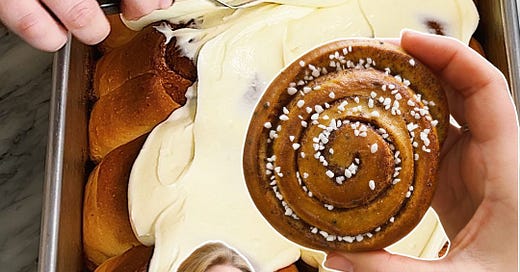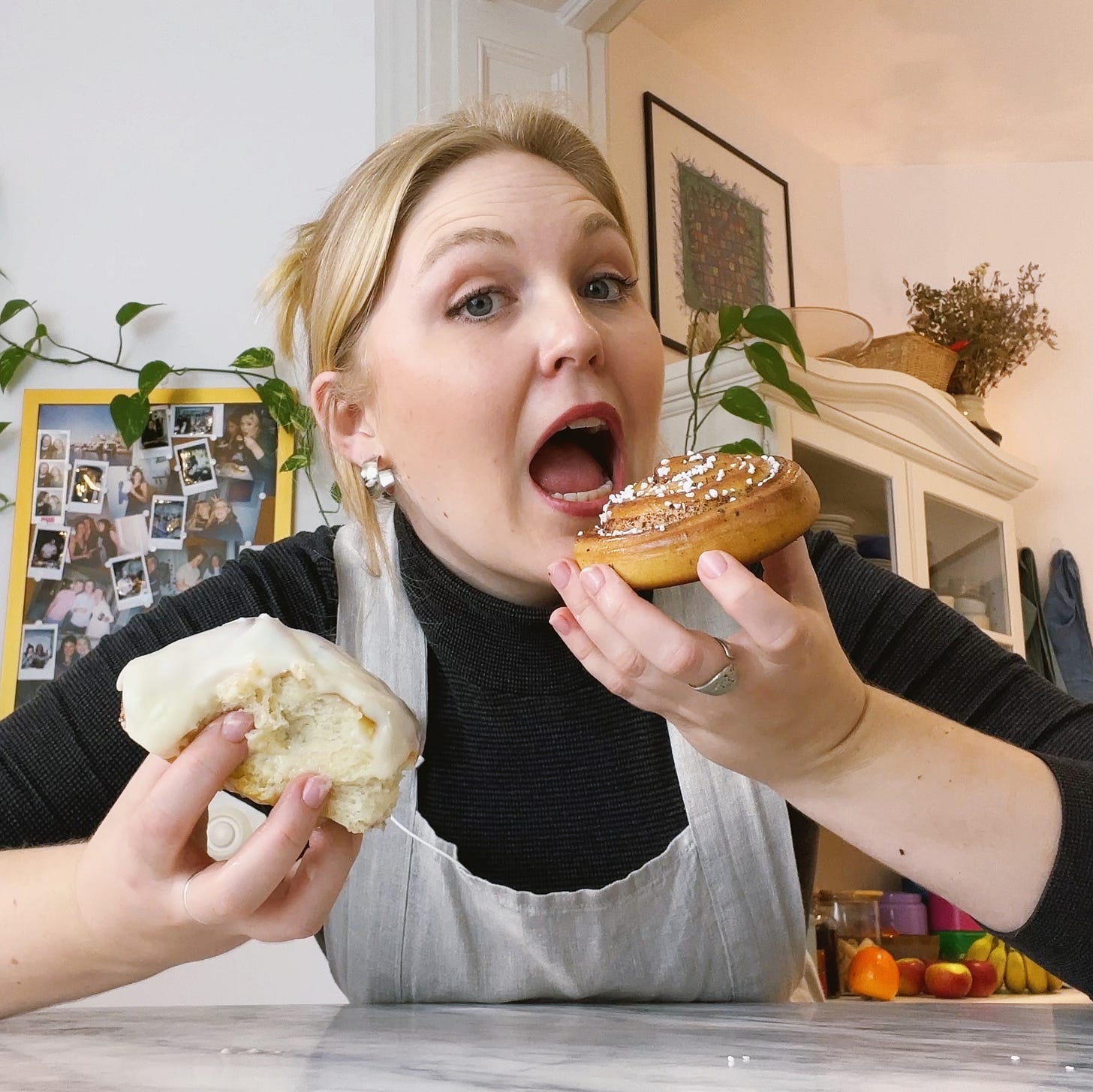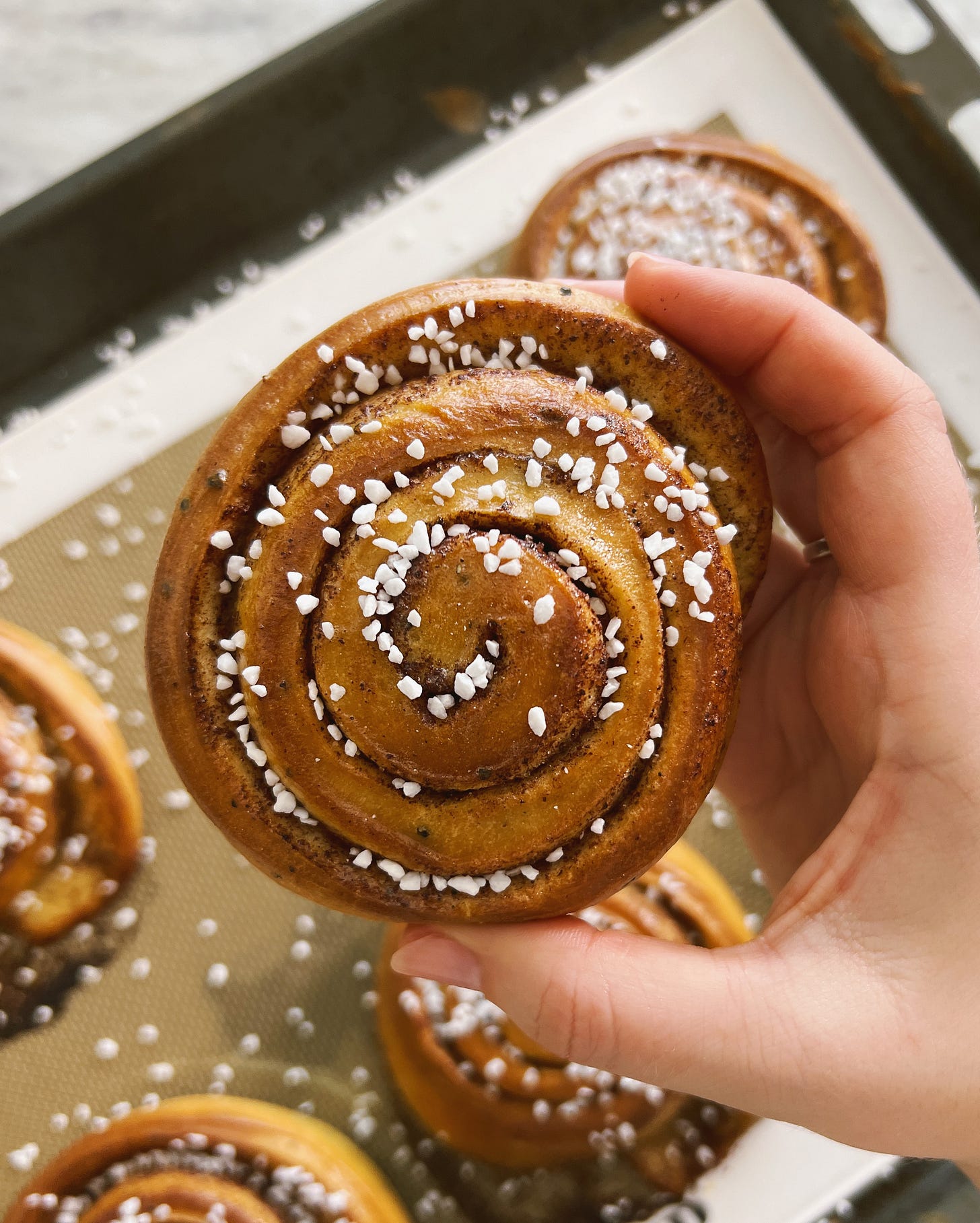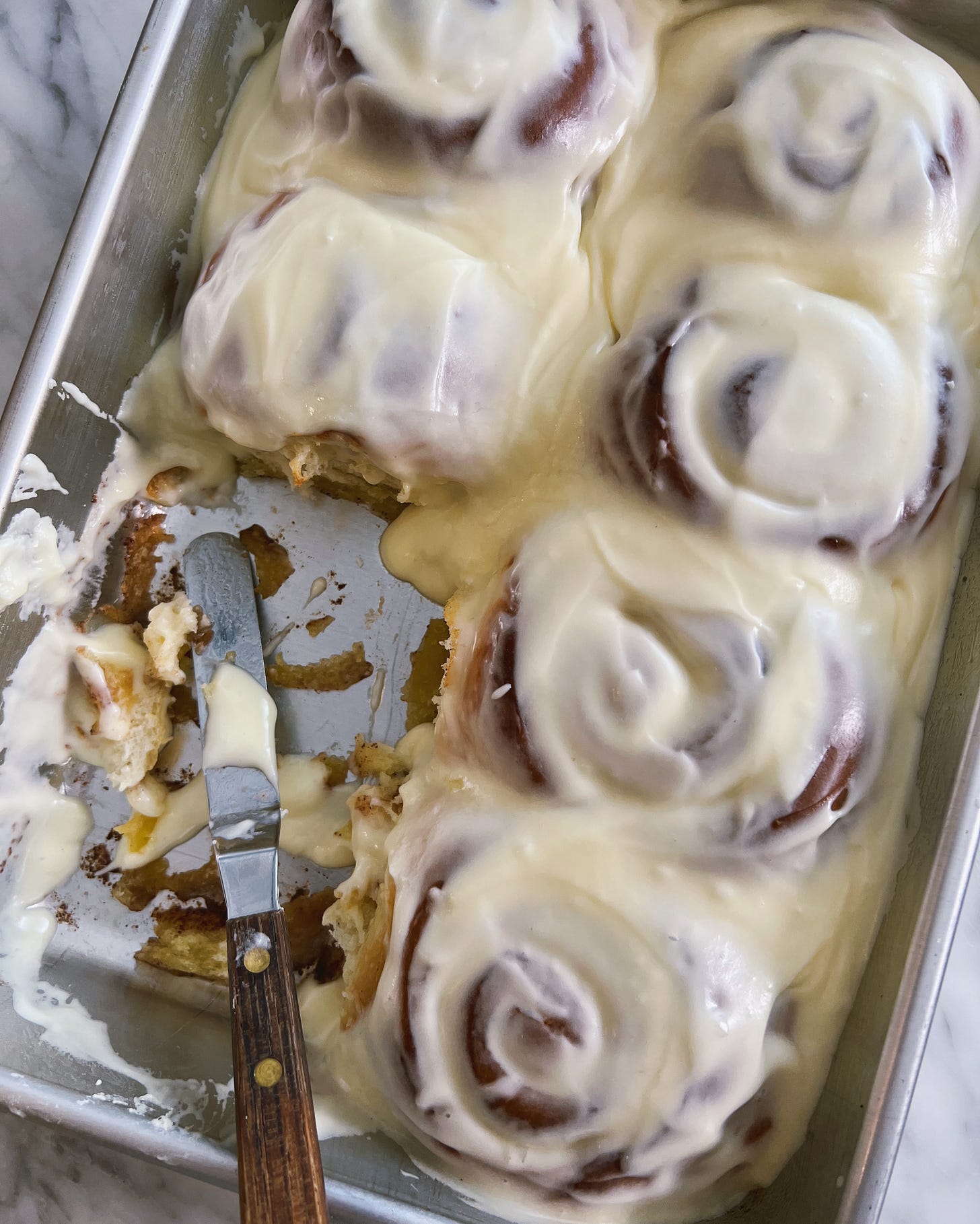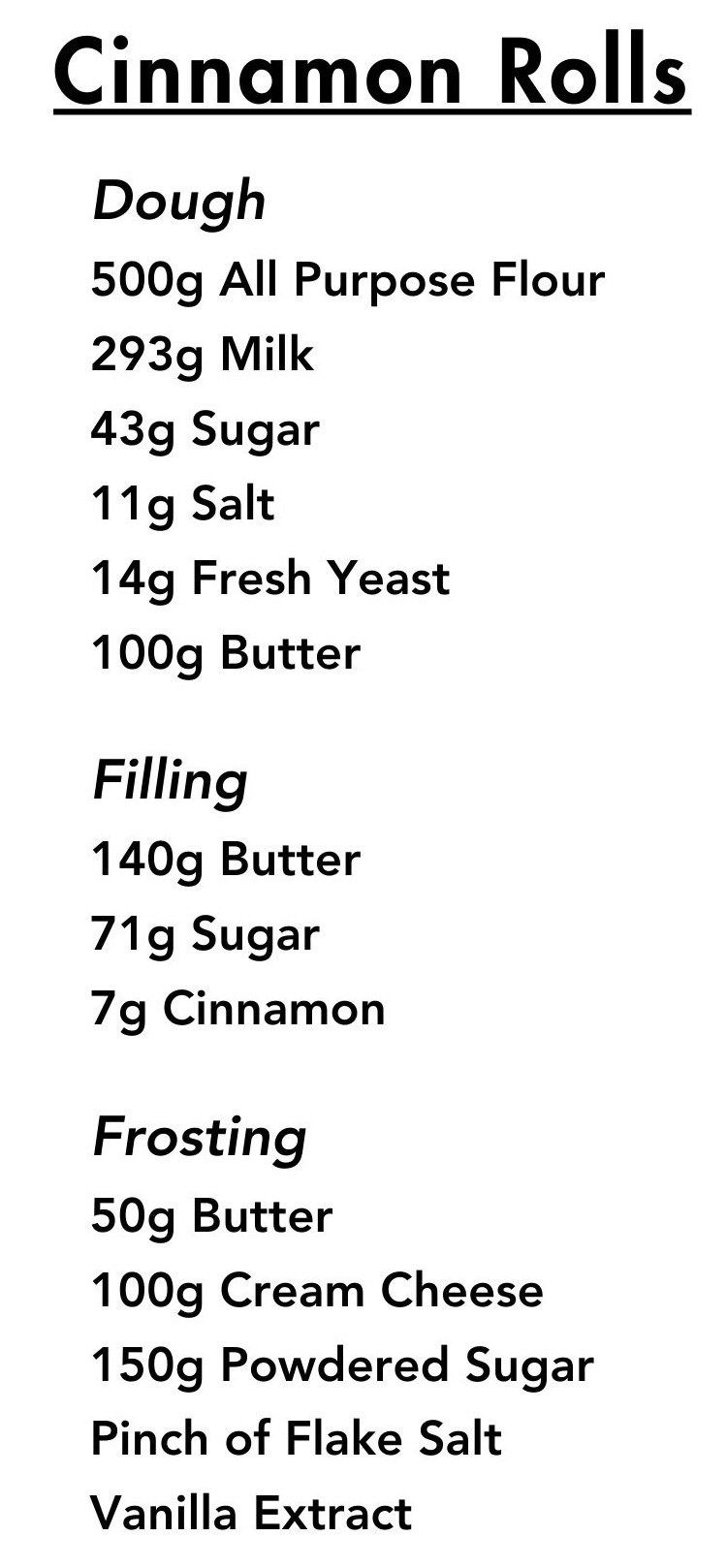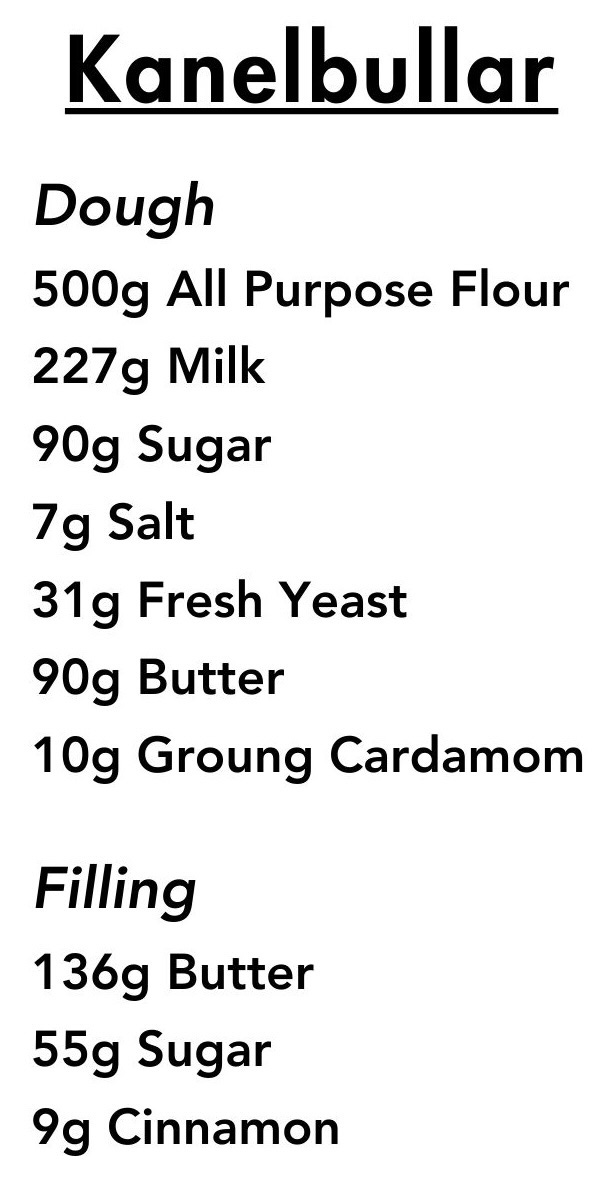I’ve faced two big questions over the last several days. The first: what am I supposed to write about this week??
Do I mention the vlog I made while running a 10km in the snow? Should I tell you about mazarins and how they are the perfect little afternoon sweet treat? Do I talk about the video I just threw together of me making dinner in 15 minutes that now has almost 600,000 views on TikTok? Or better yet, do I focus on my second big question of the week: who makes the better cinnamon bun—the Americans or the Swedes?
Let’s deal with the first by talking about the second.
Recently, I’ve been thinking about how many foods are kind of “same same but different” in the two countries I call home. Which is more chocolatey delicious: kladdkaka or brownies? Which would you rather have for breakfast: American pancakes or Swedish ones? And, of course, cinnamon buns. Both countries are famous for their version, and I’ve made both kinds many, many times. But is one of them better than the other?
I decided I really needed to test the recipes side by side. I found that both the doughs and the fillings were very similar. I mean, how different could they really be? Especially since I made both of those recipes, and they’re tailored to my tastes. The biggest differences were in the size and the topping.
The cinnamon buns I made came in at just under 200g each and would, I think, be considered normal-sized in the US. Certainly not large. The Swedish ones were between 80–90 grams, which I think is the usual size for a home kitchen. Bakeries in Sweden sometimes make their buns a bit bigger, maybe averaging 100g or even up to 120g, but a 200g bun would be considered enormous in Sweden. In the US, it’s considered breakfast.
This is actually something I forgot to mention in the YouTube video: Swedes and Americans eat their buns at very different times. While a cinnamon bun certainly could be eaten for dessert, it is definitely considered breakfast in the US. Many times in my childhood, I had an ooey-gooey cinnamon bun and a glass of milk for breakfast before skipping off to school. A Swede would never. That’s not breakfast—it’s barely food! But it is fika. And Swedes really do love fika.
Fika, for the uninitiated, is basically a coffee break. You take 10–15 minutes, sit down with a cup of coffee and a little sweet treat, and relax. In most offices, this happens twice a day: mid-morning, around 10:00, and mid-afternoon, often around 15:00. It doesn’t necessarily have to be sweet—a piece of hard bread with some cheese counts—and it doesn’t necessarily need to be coffee either. Tea is also accepted.
But, to get back to the point, very, very rarely would a Swede have a kanelbulle first thing in the morning. And when they do have that bun, it had better be topped with pearl sugar! This is really where I think Swedish and American cinnamon buns differ the most: the topping. Most American buns are coated in a thick layer of frosting or at least some kind of glaze. Again, Swedes would never. If a cinnamon bun isn’t topped with pearl sugar—heaven forbid—it would be topped with a bit of regular sugar or nothing.
After trying both side by side, I concluded that I love both and simply can’t choose between them. That would be like choosing your favorite child. Sure, you might have a favorite right at that moment, but at the end of the day, you love them equally.
If you’d like to make your own cinnamon buns or kanelbullar, I have the full-sized recipes here and here. Below are the smaller 500g recipes. I haven’t written the instructions as they are exactly the same as on the website, and honestly, I’m running out of steam here. I’ve also included the cream cheese frosting recipe with the American cinnamon buns. It works great with these buns, but don’t try to frost a cake with it.
See you next week <3
xoxo,
Cecilia
P.s. These recipes look fussy because I didn’t round when rescaling. It doesn’t have to be precisely 293g of milk in the cinnamon rolls. It can be 295g, that ok. But not 300g. That’s taking these too far!

